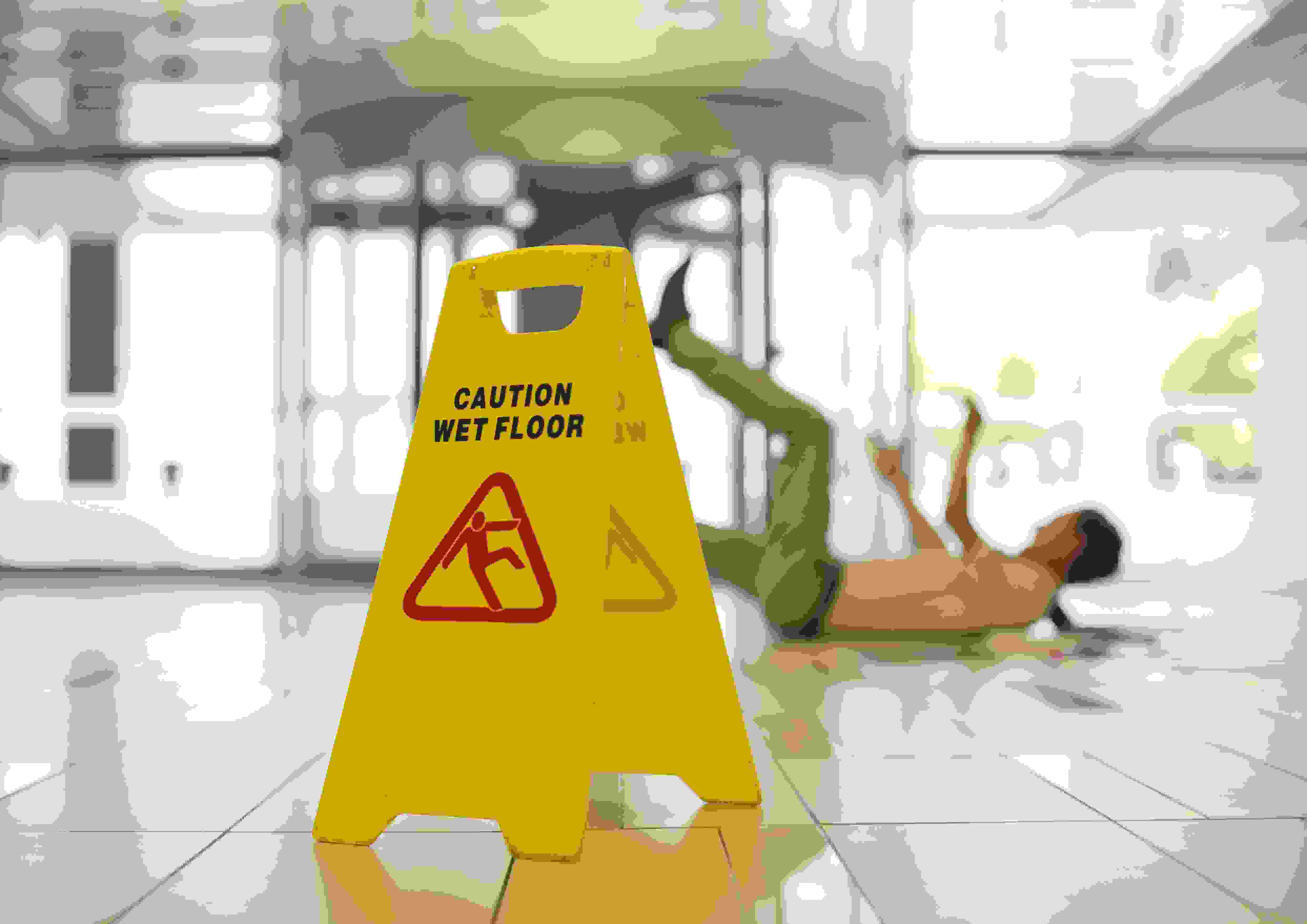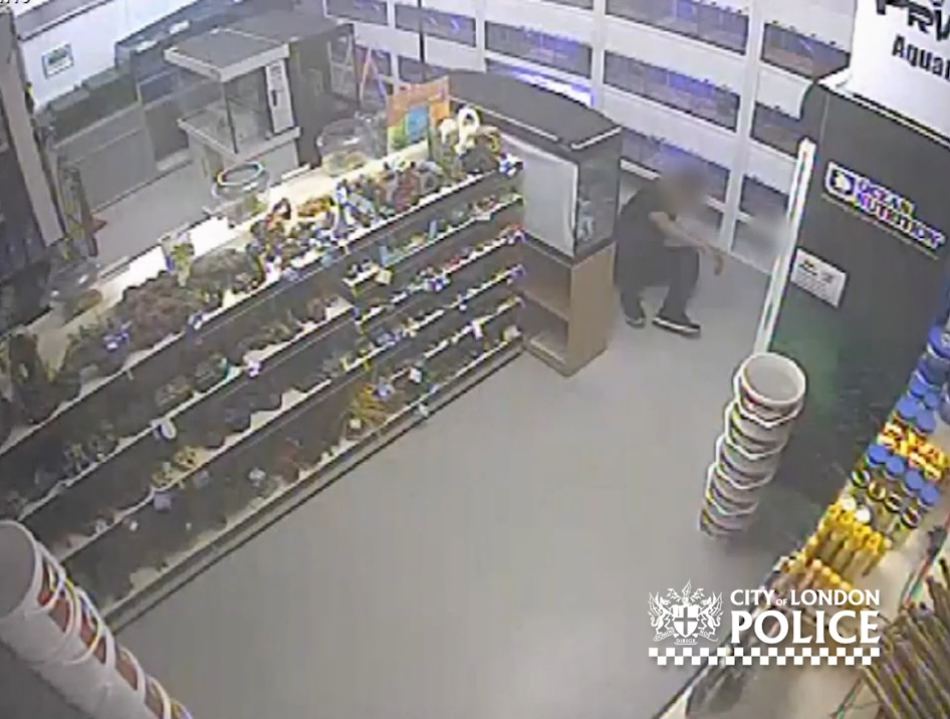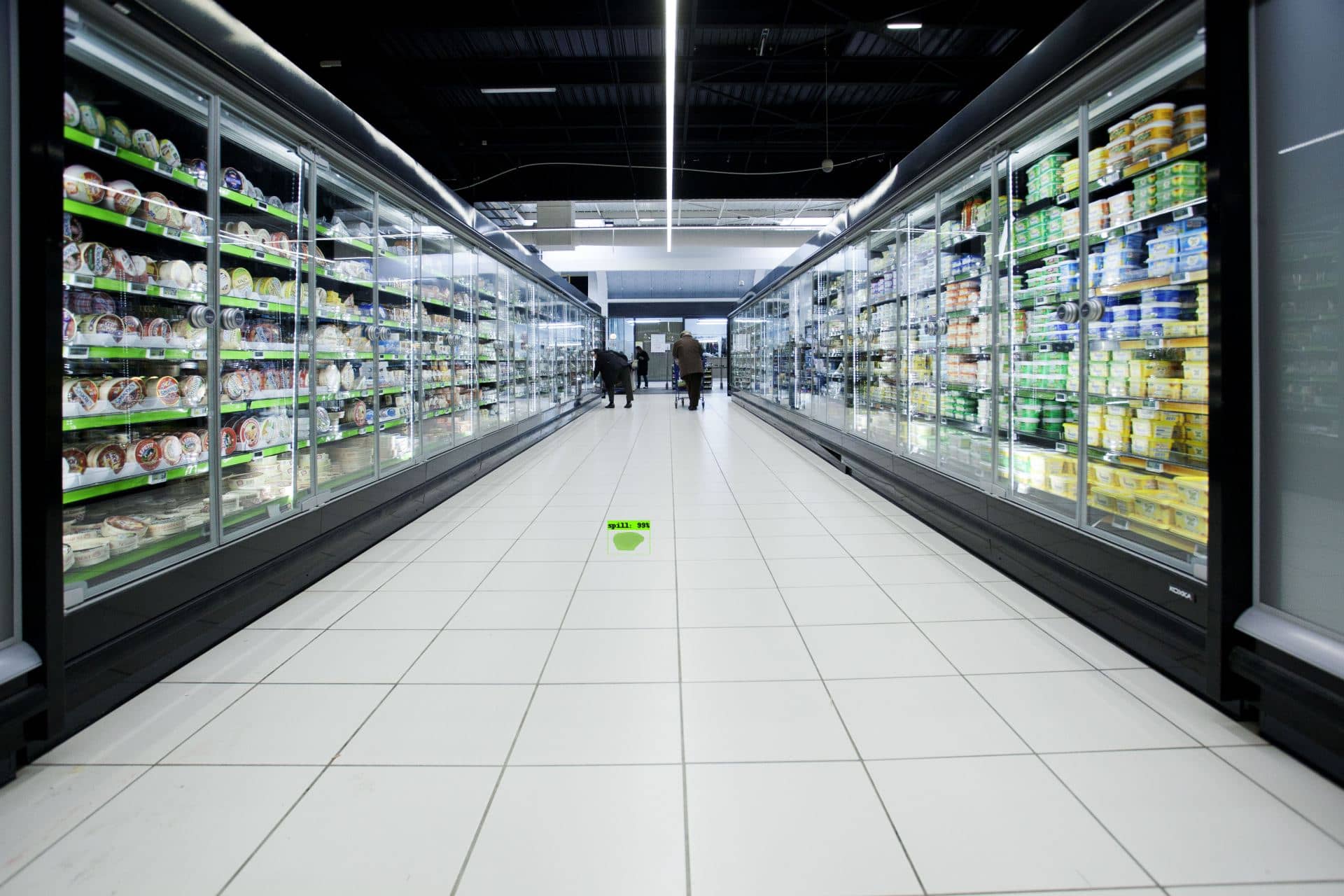Best way to avoid Liquid Spills and how to mitigate the risk of Personal Injury claims
Executive Summary – Liquid Spill Detection Software
The focus of this whitepaper is to consider the impact of liquid spills on society. It will also look at the implications of workplace spills and other hazards on health & safety. Then it will provide recommendations on effective methods to avoid the associated financial costs from a loss prevention and asset protection perspective. We also explore the burden of related personal injury claims and how businesses may mitigate such risks through the use of liquid spill detection systems. Finally, we will contemplate the ever-growing issue of fraud, which is driven by the large sums of money typically awarded to claimants in these types of cases.
Introduction – Hidden Cost of Liquid Spills
Recent research published by the Health & Safety Executive highlighted that the cost to society in the UK caused by trips and slips is over £800m per annum. Employers foot an incredible £500m of this amount through a mix of visible and hidden costs. Although visible costs, for example injury, ill health, and damage are generally covered by insurance policies, there are also a number of hidden costs. These hidden costs range from employees working overtime to provide cover for those that are injured, to time spent on related investigations, subsequent clerical effort, and ultimately fines for negligence.
Research by Business & Industry Connection has also shown that this is not just a UK phenomenon, with trips, slips, and falls costing businesses over $11bn per year in the US. Figures from the National Safety Council reveal the true extent of the problem, with slips, trips, and falls being one of the most common and costly incidents across all industries; they account for 65% of lost workdays. This highlights the need for businesses to continually raise the bar in the key area of occupational health and safety.
The majority of trip and slip incidents result from slippery conditions caused by contamination (for example fluid discharge) or liquid spills (an issue compounded by non-existent/poor liquid spill detection procedures). This places businesses in a difficult and potentially risky position, as the liability for these types of accidents or incidents can be very high. For example, research has shown that compensation for foot injuries in the UK can range between £12,900 and £65,710, depending upon severity. These figures are supported by findings from Business & Industry Connection, which gives similar costs, quoting an average of $20,000 in the US; furthermore, the cost to defend a slip and fall claim is typically $50,000.

According to the National Safety Council, slips, trips and falls are one of the most common and costly workplace incidents across all industries, they even account 36 percent of emergency department visits. However, they are not only a problem for employees from an occupational health and safety perspective, as customers, vendors, visitors and even the general public can also be at risk. A recent case, wherein a company boss was awarded a £130,000 pay-out from British Airways after slipping on spilt liqueur, highlights both the cost to business and the increasing litigious nature of society in which we live.
These factors not only illuminate the need for businesses to place health and safety at the centre of any Corporate Social Responsibility (CSR) initiative, but also bring to the fore the necessity of health and safety as the centrepiece of any effective loss prevention strategy. Doing so would in effect help to negate business liability, avoid costly personal injury claims, and deliver proactive asset protection.
Fraud – Driving Personal Injury Claims
We have already observed the huge costs that can result from genuine or bona-fide incidents. For example, in a life changing accident a woman was awarded £1.2m after slipping on spilled grapes in a leading grocer. However, with average personal injury claims worth around £14,000, this has attracted notable attention of fraudsters. This has been adequately demonstrated by a recent case wherein a former law student, who pretended to trip over a crate of orange juice in a supermarket and claim for her injuries, became the subject of the first private prosecution in the UK against a ‘slip-and-trip’ fraudster.
Recent research by Aviva into the value of fraudulent slip-and-trip liability claims made against employer’s liability and public liability insurance policies has shown that this is growing by around 20% per annum. They also noted that the scale of undetected fraud remains ‘substantial’, however improvements within the detection rates of fraudulent claims continues to be hampered by significant technological constraints.
Yet there may be a little light at the end of the tunnel, as noted through a case wherein a man was sentenced after CCTV exposed a fake slip and trip claim. Within the footage, the claimant can clearly be observed sitting down then reporting a trip and slip incident. If this claim had proven to be successful, the fraudster would have walked away with around £11,000. This case also provides a vivid example of the drastic lengths that fraudsters will go to, particularly when noting the potential size of the prize on offer.
City of London Police - IFED slip and trip claim

Solution – Liquid Spillage Detector
So, what is the best way for businesses to avoid slip, trip, and fall incidents? Well, let’s first dig a little deeper into the causes to gain some insights that may help to paint a clearer picture.
Research by the Health and Safety Executive (HSE) has shown that 71% of trips and slips are avoidable, therefore by taking appropriate action loss prevention specialists can mitigate substantial risk for employees, customers, and site visitors alike. However, this is not necessarily as straightforward as it may seem, a point illuminated by the findings of the HSE. The HSE noted that human factors played a significant role in the majority of trip and slip accidents and predominantly resulted from a poor perception of risk.
Interestingly, research has shown that there is often a failure of staff to identify slip and trip risks, a factor compounded and accompanied by a breakdown in the reporting of spills. Investigation by the HSE into trips and slips also revealed that a significant proportion of spills originated from customers dropping items, who then failed to report the incident. The findings of this research identified 15 individual human factors that played a significant and common contributory role in trip and slip incidents. These findings therefore shine a clear light upon human behaviour and how it drives our daily decision making, and key to understanding the latter is grounded in behavioural science.
We are all subject to a number of heuristic biases, these are mental shortcuts that allow people to solve problems and make judgments quickly and efficiently. These biases, or cognitive shortcuts, underpin our decision making processes, even those of experts or professionals. Confirmation Bias, which is an inbuilt tendency to search for, interpret, favour, and recall information in a way that confirms or supports one's prior beliefs, is particularly prevalent and generates poor risk assessment, since little weight is placed upon disconfirming information.
A phenomenon referred to as Bounded Awareness, which encompasses heuristics, also describes how obvious information is missed, or simply not seen by an observer. When extended into decision making and forecasting, it illustrates how there is a natural tendency to over focus on some information whilst simultaneously failing to use other easily available information. An outcome that generates fundamentally flawed decisions, which can come with disastrous consequences. But how prevalent is this in businesses and organisations and how impactful is it? Consider the following quote:
The above was made by Richard Feynman during the Presidential inquiry into the Shuttle Challenger Space Shuttle disaster, which killed 7 astronauts. An outcome that investigation showed was primarily driven by cognitive biases within experts, which resulted in an extremely poor perception of risk. Applying these constructs to trips and slips illustrates how they simply go unnoticed, a point highlighted within research undertaken by the HSE.
For example, if someone is busy and they notice a spill, they may fail to report it until they have dealt with what they ‘deem’ as priorities, particularly if they have done so in the past and nothing bad has happened. Then we have another extremely powerful heuristic, loss aversion, wherein the pain of losing is psychologically twice as powerful as the pleasure of gaining. The latter may explain why customers fail to report dropped items, as they are looking to avoid any potential loss through having to pay for the item that they have dropped. A combination of these issues simply leaves businesses exposed to significant risk and liability.
When reflecting upon numerous behavioural factors, what becomes strikingly clear is the need to remove human decision making from the reporting of incidents, due to an inherent poor perception of risk, and to introduce some form of automation, which will provide an alert to trigger immediate action. Until now this has proven extremely difficult to achieve, primarily as a result of the level of computing power required. However, in the age of the Internet of Things and Artificial Intelligence, this level of computation power is now in reach at an affordable price, which opens up an array of new and innovative software solutions for loss prevention and asset protection specialists that can be built upon existing CCTV network infrastructure.

Designed specifically to address the problems raised within this whitepaper, Ocucon in partnership with SeeChange have just released a brand new product that automatically detects liquid spills. Built upon existing CCTV network infrastructure, Spill Detect uses Artificial Intelligence to automatically detect liquid spills and provides notifications through announcements, email, SMS and via a portal. Spill Detect is a technology developed for organisations that wish to take pre-emptive action to reduce loss and negate liability cases, its AI Software engine displays an image along with a 30 second video of the liquid spillage event and delivers rapid ROI.
Conclusion – Best way to avoid Liquid Spills
So, what is the best way to avoid liquid spills and how can businesses mitigate against the risk and cost of related personal injury claims?
What is clear is that people generally have a poor perception of risk. This factor is primarily driven by underlying human behaviour, a point supported by research from the HSE that highlighted 15 avoidable and common contributory human factors that preceded trip and slip incidents. Therefore, to make any substantial improvements within the reporting of factors that facilitate trip and slip incidents, and to reduce or prevent related loss, businesses and organisations need to take humans out of the reporting loop. To do otherwise requires counteracting the way humans are naturally wired, which is extremely difficult to achieve, even when dealing with experts. The Space Shuttle Columbia disaster along with the loss of another 7 astronauts provides a vivid demonstration of the latter, it followed 17 years after Challenger and resulted from similar behavioural issues that NASA had proven unable to successfully resolve during the period between these tragic incidents.
Through removing the human element from and using automatic detection for the reporting of liquid spills, businesses and organisations may make significant improvements in both CSR and Loss Prevention initiatives by taking proactive health and safety action. This is now possible through a brand new and exciting product that automatically detects liquid spills - Spill Detect. Using Artificial Intelligence built upon existing CCTV network infrastructure, Spill Detect allows users of it to take pre-emptive action and to reduce loss and negate liability cases.
When considering the potential for fraudulent claims, Spill Detect provides a vivid deterrent to fraudsters, particularly when supported by the Ocucon Cloud, which offers unlimited storage for unlimited CCTV cameras. Cloud helps businesses overcome the risk of limited storage which can leave them without the evidence they need to refute fraudulent claims. Providing a range of unique world leading products, Ocucon offers a complete solution for asset protection and loss prevention. Our solutions can be provided on or off network and Ocucon will even develop bespoke reporting dashboards, if required, so that they meet your specific requirements.
References
What do slip and trip accidents cost?
Business cost of slips, trips and falls
How Much Compensation Can I Claim for a Slip Trip or Fall Claim?
Woman awarded €1.4m after slipping on grapes in Tesco
£90m of UK claims fraud detected by Aviva in 2017 - up 5.4%
Scammer pretended to trip over juice then tried to claim cash from supermarket
Value of detected claims fraud falls as fraudulent applications rise sharply
Man sentenced after CCTV exposes fake ‘slip and trip’ claims
Identifying human factors associated with slip and trip accidents
Kahneman, D. (2011) Thinking, Fast and Slow. London: Allen Lane.
Bazerman, M. H. and Chugh, D. (2007) 'Bounded awareness: what you fail to see can hurt you', Mind & Society, 6(1), pp. 1-18
Kahneman, D. Tversky, A. (1979) Prospect theory: An Analysis of Decision under Risk pp. 263-292. Econometric Society
The Cost of Silence: Normalization of Deviance and Groupthink

